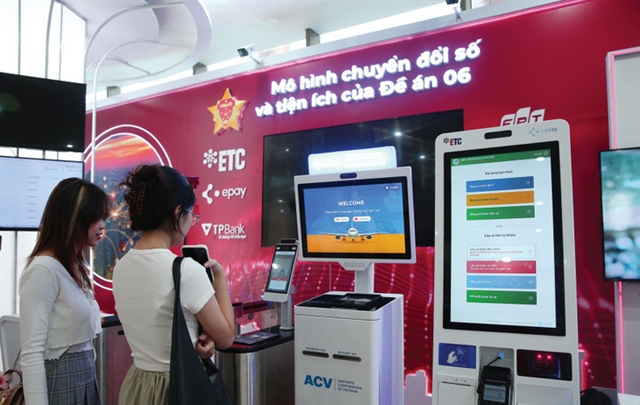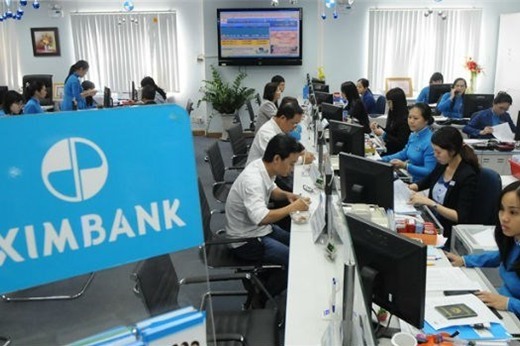 Business Beat
Business Beat

At its third session the 14th National Assembly passed a resolution to trial various policies on bad debt settlement and the handling of secured assets for bad debts of credit institutions, branches of foreign banks and State-owned organisations to speed up the settlement of bad debts, which are acting as speed bumps in the banking sector’s development.
 |
| The State Bank of Việt Nam (SBV) released data as of December 31 last year showing bad debts on balance sheets and those sold to the VAMC accounted for 5.81 per cent of total outstanding loans. — Photo ndh.vn |
HCM CITY — At its third session the 14th National Assembly passed a resolution to trial various policies on bad debt settlement and the handling of secured assets for bad debts of credit institutions, branches of foreign banks and State-owned organisations to speed up the settlement of bad debts, which are acting as speed bumps in the banking sector’s development.
Prime Minister Nguyễn Xuân Phúc recently issued a directive on execution of this resolution.
It calls on related ministries and other agencies to implement measures to prevent bad debts, improve credit quality, promote the role of the Vietnam Asset Management Company (VAMC) in handling bad debts.
He advocated a stronger role for the VAMC in tackling bad debts. He also called for appropriate measures to bring the non-performing loans (NPL) ratio down to 3 per cent or less by 2020 -- exclusive of NPLs, also called bad debts -- at weak banks through specific methods approved by the Government.
The State Bank of Việt Nam (SBV) released data as of December 31 last year showing bad debts on balance sheets and those sold to the VAMC accounted for 5.81 per cent of total outstanding loans. If rescheduled bad debts were taken into account, the rate was 10.08 per cent.
Analysts said with bad debts being banks’ biggest problem, the resolution (No 42) with its many provisions to handle the assets mortgaged against bad debts will encourage foreign and domestic investors to participate in the banking sector’s restructuring process.
So far there has been no provision for a final resolution of the secured assets meaning it was difficult to persuade investors to buy the debts.
VAMC has so far bought VNĐ182 trillion (US$8.08 billion) worth of bad debts, but sold only VNĐ9 trillion ($400 million).
Besides a debt trading market, a streamlined legal framework for bad debt trading and settlement of secured assets is also necessary to help the VAMC recover bad debts.
The new resolution creates such a framework with many new measures to handily address the bad debts.
They include authority for credit institutions to seize the mortgaged assets which are in the possession of the borrower or a third party if the agreement allows it. Such foreclosure will be assisted by local authorities including the police.
Now a credit institution does not have the right under law to foreclose secured assets.
The resolution also allows credit institutions to sell bad debts at market prices which may be lower than the principal amount of the debt.
Another barrier to investors taking part in the debt trading market is that Việt Nam does not have independent assessment agencies.
Investors will not participate in a market unless they know assets’ true value, the potential to resell such assets, and bad debt trading procedures.
The VAMC is allowed to buy bad debts from banks and sell them at a price determined by an independent valuer agreed between it and the selling banks.
Those policy changes included in Resolution No 42 are expected to encourage both domestic and foreign investors to participate in the restructuring of banks particularly those that have been bought by the State Bank of Việt Nam at zero đồng.
The central bank bought three joint-stock lenders, Việt Nam Construction Bank, GP Bank and Ocean Bank, at zero price and assigned commercial State-owned banks to restructure them.
The SBV has said Ocean Bank has already been bought by a foreign investor and is now in the second phase of restructure.
The two remaining banks also interest some foreign and domestic investors who want to take part in their restructuring.
This means that the number of mergers and acquisitions in the banking sector is set to increase significantly.
Breweries out of reach?
The Government has decided to sell its entire 89.59 per cent stake in Sài Gòn Beer Alcohol Beverage Corp (Sabeco) for $1.8 billion and its 82 per cent holding in Hà Nội Beer Alcohol Beverage Corp (Habeco) for $404 million through auctions, and many global brewers are interested in buying them, hoping to enter what is a hugely promising beer market.
Việt Nam is in fact one of the world’s most attractive beer markets and the biggest in Southeast Asia, thanks to a young population that is expected to consume four billion litres this year, averaging 42 litres per capita.
Sabeco and Habeco have 60 per cent of the market. The former is the largest beer company in the country, having produced nearly 1.64 billion litres in 2016 for a 46 per cent market share. Habeco was third with 717.4 million litres and a 17.3 per cent share.
Sabeco has set itself a profit target this year of VNĐ4.7 trillion ($207.1 million), up 1 per cent from 2016, on a turnover of VNĐ34.5 trillion ($1.52 billion), up 9 per cent.
Sabeco’s main market is Việt Nam, but it exports its beers to some 20 countries.
Habeco expects sales of VNĐ8.7 billion and profits of over VNĐ1 trillion.
Sabeco is planned to be sold in two tranches in 2016 and 2017, while Habeco is scheduled to be divested this year.
However, no firm plans have been announced yet.
Australia’s largest brewer, Carlton & United Breweries (CUB), has expressed interest in becoming a strategic investor in both Sabeco and Habeco.
Besides, several other foreign breweries have been eyeing Sabeco since it was earmarked for equitisation, including San Miguel, Heineken, SABMiller, Thai Beverage Public Company Limited, Asahi Group Holdings Ltd and Kirin Holdings Co.
In mid-July, the State Securities Commission called on the Ministry of Industry and Trade to make divestment plans with a maximum foreign ownership of 49 per cent.
If the Prime Minister approves the proposal, foreign investors obviously cannot acquire a controlling interest in the two brewers.
Along with policy barriers, the cost involved could also be a factor in acquiring controlling stakes, according to securities analysts.
At July 26 closing prices the market capitalisation of Sabeco and Habeco were VNĐ151 trillion ($6.66 billion) and VNĐ18.7 trillion ($824.5 million).
Thus, foreign investors will have to shell out at least VNĐ76 trillion ($3.39 billion) and VNĐ10 trillion ($44.09 million) to buy more than 50 per cent of their shares.
The analysts said not many investors including foreigners can manage that kind of money.
After being equitised in 2008 Habeco signed a strategic agreement with Denmark’s Carlsberg Breweries A/S. The latter has always been interested to further invest in the company to acquire a controlling stake.
Habeco is now preparing a plan for the Government’s divestment.
For Sabeco, divestment will be simpler it is not bound by strategic partners unlike Habeco.
Provinces seek air links
Two months ago leaders of Cần Thơ city met with tourism and airlines executives to discuss starting flights to destinations in Việt Nam and other countries.
The city government plans to provide financial support to airlines which are ready to fly on new routes. It may be in the form of waiver of office rents for a 12-month period or a reduction in ground service fees in the beginning.
Cần Thơ estimates that it would have to make up losses estimated at VNĐ4.5-8.5 billion per airline, depending on the routes they fly.
Many other provinces in the country also have plans to operate new air routes.
Among them is the central province of Quảng Bình, from where direct flights to Thanh Hóa Province began recently.
It is soon expected to be linked with Chiang Mai in Thailand.
The central province of Thừa Thiên-Huế wants to increase the frequency of flights on current routes and add new routes like Huế-Cần Thơ-Phú Quốc; Huế-Luang Prabang-Bangkok; Ayutthaya-Bagan (in Myanmar).
Leaders of the provinces that are eyeing new new airline routes said they are aimed at diversifying transport modes to not only help attract more tourists but also advertise local tourism attractions.
Tour company Vietravel was an early mover when, in collaboration with some localities, it begun operating air services linking famous tourist attractions in Việt Nam and other countries.
They included Cần Thơ-Lâm Đồng; Cần Thơ-Đà Nẵng; and Vinh-Bangkok.
The company plans to start a service between Hải Phòng and Bangkok.
Operations have ceased on some of these routes due to lack of demand, but Viettravel executives have no regrets about their investments since they helped the company expand its market share, promote its brand name and support localities where the it has offices.
They cite the Cần Thơ-Bangkok route as an example. They said in the beginning the route made big losses, but this summer for instance the fights on this route were all 93-95 per cent booked.
An airline executive said his company has been asked by many provinces which have airports to begin new services with pledges of financial support.
But financial support is not a decisive factor in the decision to operate on a new sector, he said.
Airlines carefully study demand, potential for future development, ability to connect to existing networks and impacts on existing routes before deciding to start a new route, he said.
Demand is the primary factor, he stressed.
Experts said pricing is an important factor in the success of air routes.
If airlines and provinces want to encourage more people to come to a particular destination they must offer a good price, they said.
A Saigontourist spokeswoman said provinces need to combine road and air routes in an efficient way to serve their tourism needs.
It is also necessary for them to advertise local air routes as well as tourism products if they want to attract tourists, she added. — VNS




